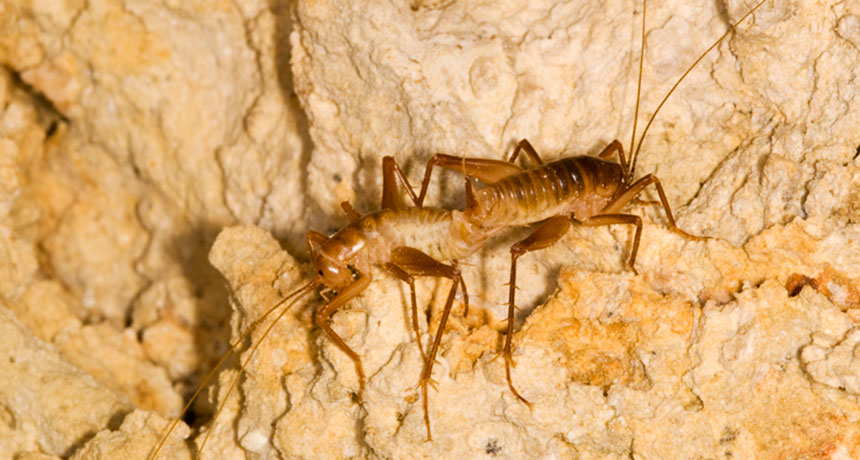Unknown species hide among Texas cave crickets

Texas caves may be home to more Ceuthophilus crickets than are officially recognized, a new study shows.
Jean Krejca
- More than 2 years ago
There’s no need to trek to the wilds of Borneo or the deepest Amazon if you want to discover a new species. There is at least one — and perhaps more — hiding among Ceuthophilus cave crickets in Texas, a new study finds.
Jason Weckstein of Drexel University in Philadelphia and colleagues weren’t looking for new species, and they haven’t definitively found any. But they have found some curious characteristics among the Texan crickets, as well as genetic evidence that there may be more species than science officially recognizes.
Ceuthophilus cave crickets have split into two groups. One subgenus — also named Ceuthophilus — is full of species that are trogloxenes, meaning they live in caves and venture out at night to find food. (If they get caught outdoors during the day, they hide under rocks.) The other subgenus, Geotettix, are troglobites that can only survive if they never venture out into the light.
Because crickets in the Ceuthophilus subgenus get out of the caves and perhaps even move between them, those crickets should be able to interbreed more, the researchers figured. Geotettix crickets would be stuck closer to home, and their populations would be more distinct from each other, the team predicted. And those differences should be detectable in the crickets’ DNA.
So the team collected 179 Ceuthophilus and 122 Geotettix crickets from 43 caves in 20 Texas counties, as well as a few caves in Mexico and New Mexico. The researchers then obtained the sequences of two genes found on the crickets’ mitochondria. Mitochondrial DNA evolves rapidly and can be useful for studying populations of organisms.
Crickets in the Ceuthophilus subgenus, the DNA analysis revealed, were not moving about nearly as much as the researchers had expected, they report March 3 in the Journal of Biogeography. The crickets might be limited by streams or other features of the landscape. Those in the Geotettix subgenus, meanwhile, are more homogeneous than expected. The genes from one population to the next are more similar than they should be if they were totally isolated from each other and couldn’t interbreed. Members of those populations may be able to travel underground between caves, the scientists suggest.
The DNA also showed that there might be multiple species lurking in the caves that have not yet been officially recognized and named. At least one, nicknamed “species B,” has been known to cave researchers in central Texas for years, but no one has yet formally described it in a scientific article. Nearly all the currently known species in the Ceuthophilus genus, the researchers note, were described more than 75 years ago, and no one has added any new species to the genus in more than 50 years.
So it looks like there is a good opportunity here for someone who loves caves and insects to make some discoveries — and perhaps name a cricket or two after themselves or someone they love. But more importantly, this shows how little we know about some of the species around us.






